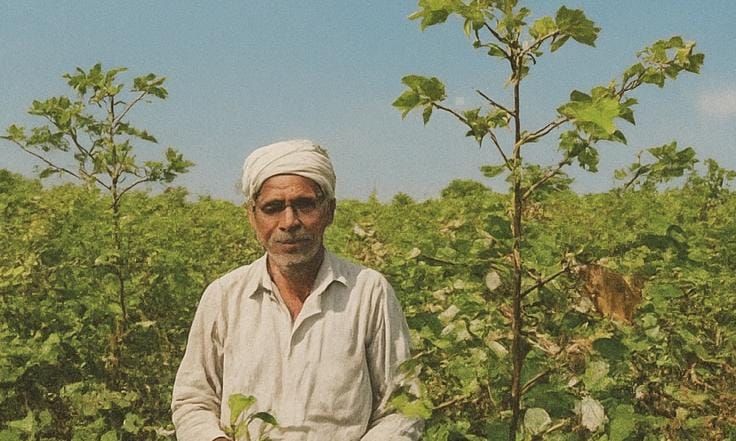
The Central government has announced that it will increase its purchases of cotton at the fixed minimum support price (MSP) to protect farmers from falling market rates. The decision comes at a time when domestic cotton growers are facing heavy pressure due to cheaper imports and unstable prices in the global market. By stepping up MSP operations, the government aims to safeguard farmers’ incomes while also keeping the textile industry stable.
Cotton farmers across India have been struggling with declining earnings. Imported short-staple fibre, sourced at lower prices from abroad, is being preferred by textile manufacturers over domestic cotton. The textile sector, which is one of India’s largest employers, has also been lobbying for relief from import duties. High production costs, coupled with shrinking profit margins and the aftereffects of the pandemic, have left the industry in a vulnerable position.
To address this dual challenge of supporting farmers and sustaining textile production, the government extended an 11 percent import duty exemption on cotton till the end of December. This exemption also covers an agricultural cess. The measure was first applied between August 19 and September 31 but has now been stretched to give breathing space to both farmers and manufacturers. The idea is to strike a balance: prevent a sudden spike in raw material costs while ensuring farmers are not left at the mercy of market crashes.
The Cotton Corporation of India (CCI), the state-run body responsible for procurement, has been asked to be more active in the market. According to officials, the CCI will be ready to purchase as much cotton as farmers are willing to sell at MSP. Lalit Kumar Gupta, Managing Director of CCI, stated that the corporation stands prepared to step in whenever market rates fall below MSP. To strengthen its presence, the CCI is expanding procurement centres from a little over 400 to more than 500 across the country.
For the 2025–26 season, the government has set the MSP for the widely grown medium-staple cotton at ₹7,710 per quintal, which is ₹589 higher than last year’s rate. However, a challenge remains because imported fibre often lands in India at rates between ₹5,000 and ₹6,200 per 100 kilograms, making it cheaper than local produce. This price gap makes it difficult for domestic cotton to compete without government intervention.
The situation is further complicated by falling cotton production in India. Output has dropped to a 15-year low of about 25 million bales of 170 kilograms each. This fall has been blamed on pest attacks and reduced effectiveness of genetically modified cotton varieties. With supply shrinking and costs higher than imports, many farmers are finding it hard to achieve profitable returns.
Global trade dynamics also add to the strain. Large international buyers have reduced imports from India after tariffs imposed by the United States under the Trump administration. As a result, many firms are sourcing more from Bangladesh or China where duties are lower. This shift has weakened India’s position in global apparel supply chains.
India imports a significant amount of cotton from countries like the United States and Australia. Despite India being one of the largest producers, domestic prices have often stayed above international rates. The country’s cotton imports for the 2024–25 season are expected to touch around 2.71 million bales, compared with 1.52 million in 2023–24 and 1.46 million the year before that.
By boosting MSP procurement, the government hopes to stabilise farmer earnings, protect the rural economy, and keep the textile industry supplied with raw material. At the same time, the move aims to contain inflation in finished products such as garments and protect small and medium enterprises that depend heavily on cotton.
The road ahead remains challenging. Farmers are hopeful that increased MSP operations will shield them from the worst impacts of volatile markets. However, long-term solutions such as improving crop resilience, reducing input costs, and aligning domestic prices with global competitiveness will be equally important. Cotton continues to be the backbone of India’s textile sector, and ensuring its sustainability is vital for millions of farmers and workers who depend on it.





















